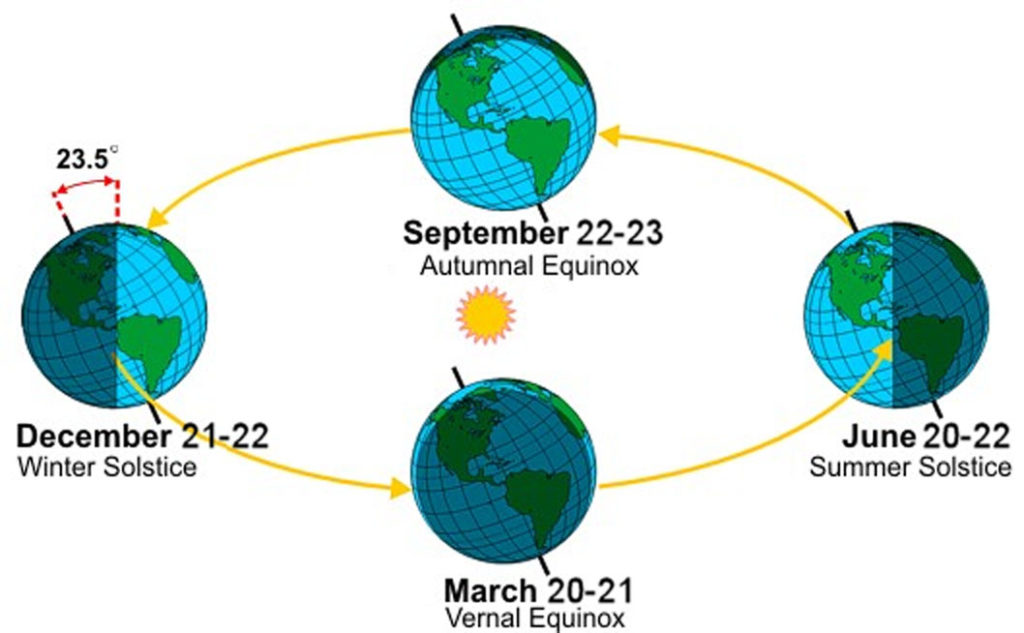Sky Report: June 14 – June 20

The axis of the earth always points toward the same direction — the North Star – as the earth orbits the sun. The earth’s northern hemisphere is tilted toward the sun at the summer solstice. Graphic courtesy National Weather Service.
The first planet to appear tonight is Venus, poetically called the Evening Star. You can see it during twilight north of due west and fairly low. Venus is so brilliant that you can see it at sunset – and even before — if you know where to look; find it one night, and then the next night look earlier to the upper left of that position, or use binoculars.
Mars is much fainter – it’s not as bright as the brightest stars – and it’s between 17° and 13° to the upper left of Venus, depending on which night this week that you look. Venus orbits the sun faster than Mars, and it’s much closer to us, so their relative motion is due to Venus while Mars essentially sits in the background. Watch Venus approach Mars. Measure the angular separation between them somehow (hold a yardstick at arm’s length) each night and estimate the date when they will be in conjunction and Venus passes Mars.
Saturn and Jupiter rise after midnight, Saturn an hour before Jupiter, and both are almost half-way up the southern sky as the sky begins to brighten with the approaching dawn. Jupiter is the largest planet and it’s the brightest object in the night sky other than the moon and Venus, while Saturn is both smaller and more distant so it’s merely as bright as the brightest stars. They rise 4 minutes earlier each night.
The bright star 5° below the moon on the night of the 19th is Spica in Virgo, the Maiden. Spica is a white star 2,000 times as brilliant as our sun that lies some 250 light years from earth.
It’s felt like summer for some time now, but summer officially begins at 9:32 pm MDT on June 20 — the summer solstice. That is the moment when the earth’s 23½° tilt is oriented so the sun rises and sets as far north of east and west as it will, its path across the sky is its northernmost, and the day is its longest. It’s warm now because the days are long and the sun shines down on us from on high. Seasons are reversed in the northern and southern hemispheres. When the northern hemisphere is tilted toward the sun, as it is now, the southern is tilted away, and June 20 marks the winter solstice for our friends south of the equator.
The Sky Report is presented as a public service by the Stellar Vista Observatory, a nonprofit organization based in Kanab, Utah, which provides opportunities for people to observe, appreciate, and comprehend our starry night sky. Additional information is at www.stellarvistaobservatory.org. Send questions and comments to
John@StargazingAdventures.org.






Comments are closed.